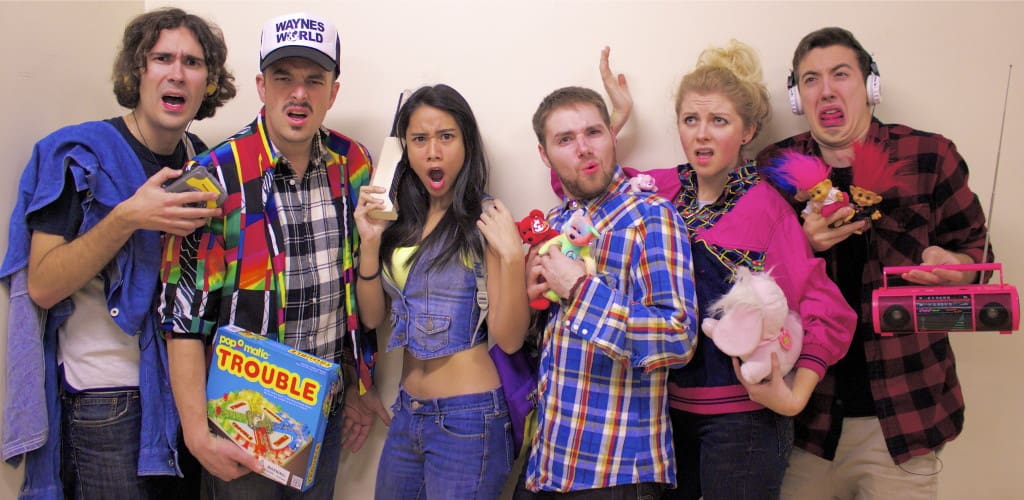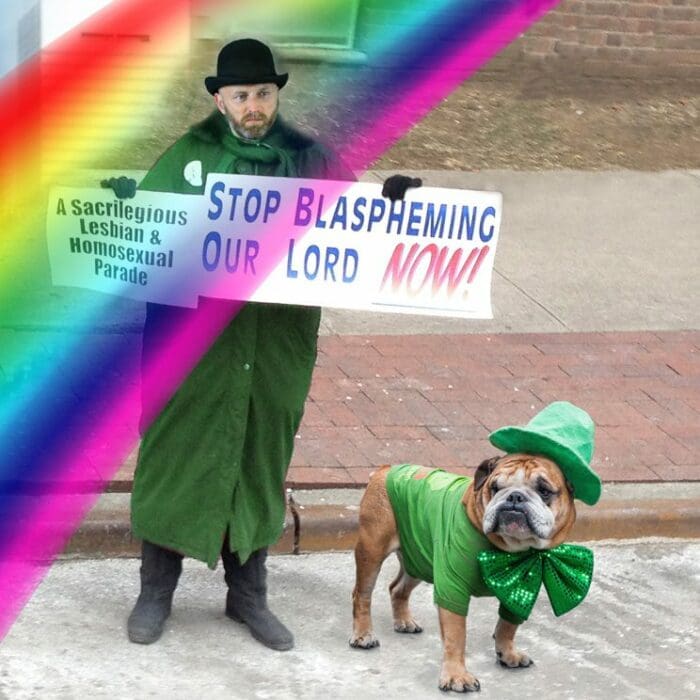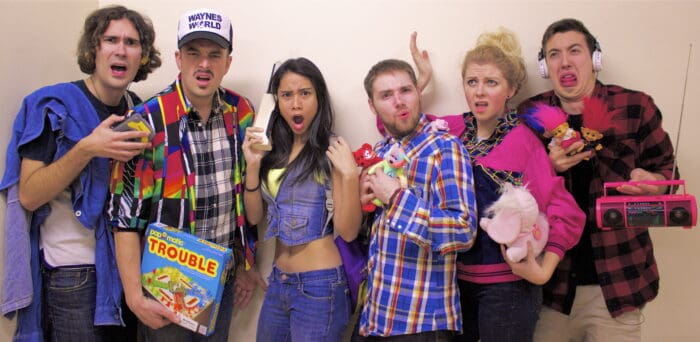 For the second year in a row, the aptly named “Frigid Festival” has brought frigid temperatures (and snow) to NYC. However, that did not deter me from trudging to the lower east side this past week to see a few of the innovative productions that downtown theatre has to offer.
For the second year in a row, the aptly named “Frigid Festival” has brought frigid temperatures (and snow) to NYC. However, that did not deter me from trudging to the lower east side this past week to see a few of the innovative productions that downtown theatre has to offer.
ERIK: A Play About a Puppet
My first show of the festival was a less than enjoyable and not quite funny satire of The Phantom of the Opera. It was a lamentable mess, actually, to the point that much of the production was unintelligible. While I have seen the musical Phantom of the Opera and have read the book that the musical was based upon, I admit to being positively baffled through much of John Patrick Bray’s ERIK: A Play About a Puppet. Set at a “human oddities” carnival show, the plot loosely follows Phantom’s plot – boy reunites with girl, girl reveals adoration for a mysterious angel, mysterious angel turns out to be the murderous and misunderstood phantom (a voiceless puppet in this case), phantom wreaks havoc to win girl, boy trudges to the depths of an opera house to save girl . . . girl turns into homicidal maniac and kills phantom and boy. Okay – the ending of ERIK does not quite align with the ending of Phantom, but you get the picture.
In addition to poking fun at Phantom, the confused plot tries overly hard to comment upon the idealized and fictional “beauty” in today’s society (at one point going so far as to have a character stand on a literal soap box), but the writing is glib. The message gets lost in the groan-worthy comedic lines and forced slap-stick antics of the cast.
ERIK is the type of play that is difficult to judge an ensemble by because they had very little to work with. The cast threw themselves into their caricature-like roles, with varying degrees of success. Matt Pepitone plays the “Detective” who mysteriously shows up and chases after the Phantom, * and Pepitone’s mannerisms were entertaining (if nothing else). Bryn Packard portrayed the bumbling idiot Raoul with charming gusto. He could have easily been portraying either of the absurd “Princes” in Into the Woods.
At the end of ERIK, the audience is directed to hold up cards with symbols on them to decide how best to destroy the theatre. Typically, I would chuckle politely at such a direction and nothing more, but I was so worn down by the mess that is ERIK that I shot my card into the air (choosing to blow-up the place).
Unfortunately, my giddiness at the show being over was short-lived – the play still had at least 10 minutes to go. A very long 10 minutes. Ultimately, ERIK is one play that needs to crawl back into the underground lair from which it came.
*The Detective might as well been speaking jibberish half of the time that he was on stage, so this is my best guess as to his purpose in the play.
Hey ‘90s Kids, You’re Old
I have a confession: I am a ‘90s kid who spent the formative years of ages 4 to 14 living in the exciting decade that was the 1990s. I, like most ‘90s kids, greatly enjoy reminiscing about how much better television and toys were in the ‘90s. Tucked away in a closet in my parent’s house is a large collection of beanie baby toys (right next to a battery-less Furby), my iTunes collection includes both Rockapella’s Where in the World is Carmen Sandiego theme song and the theme song for Wishbone, and I am unashamed to admit that more than one late night dance party has occurred in my office set to the greatest hits of the Backstreet Boys, Alanis Morissette, and the Spice Girls. Therefore, when I got the invite to review Taryn Parrish’s Hey ‘90s Kids, You’re Old, a little part of my squealed louder than a ‘90s tween at an NSYNC concert. In this pop culture arena, I am an expert.
Hey ‘90s Kids, You’re Old, is a compilation of one acts that poke fun at the plethora of cultural icons that the 1990s gave us. Technology plays a significant role in the play as technology developed quickly during my lifespan. From the launch of the internet and the joys of dial-up access, to the development of 3D gaming systems and the adoption of cell phones as a replacement for landlines, ‘90s kids grew up during an information revolution, yet this millennial generation also recalls what it was like before these advancements were common place. In some circumstances, Hey ‘90s Kids goes a bit too far in examining the perils of our current smart phone-obsessed society, commenting on the issue repeatedly, but it’s true that kids born after 1999 had a fundamentally different experience growing up than I did. Hey ‘90s Kids lampoons classics like Are You Afraid of the Dark, thrusting it into the modern day where kids no longer sit around a campfire and tell spooky stories because they are too enthralled with their cell phones. It also imagines scenarios like Waldo (of Where’s Waldo infamy) exploring an online dating opportunity with a flighty woman named Carmen Sandiego. In fact, nearly every popular cultural icon that I recall from the 1990s makes its way into the play – the Power Rangers, the movie Clueless, the Fresh Prince of Bel-Air, tamagotchis, Pinky and the Brain, Bill Nye the Science Guy, the X-Files, and even Mr. Feeny from Boy Meets World.
Much of the content is unoriginal,* but that did not keep me from grinning at the references. Nor did it keep me from singing along with the ‘90s television theme song music playing before the show and with the dance montage music playing at the end. That said, I find it difficult to imagine what the show would be like for an audience member who does not share my fond memories of the 1990s or who is too old or too young to identify with the references. The show relies heavily upon the audience being a ‘90s insider, and I venture to guess that a patron who does not fall within that demographic may find the show less engaging.
The ensemble members of Hey ‘90s Kids are charming, feisty, and pretty good at impressions. Particularly noteworthy are the performances by Alex Steele Zonjic, who has great energy on stage and a knack for creating hilarious characters, Alan Belerique who anchors numerous sketches with an admirable level of sincerity when surrounded by absurdity, and Hana Holubec who co-stars in a skit about heading to a ‘90s party while rocking a hilarious valley-girl personality.
This ‘90s kid had fun at Hey ‘90s Kinds, You’re Old, and, more importantly, it inspired me to search for a copy of the board game Trouble. I think it might be a good dinner party game. I’d settle for Hungry Hungry Hippos, though.
*90’s REFERENCE: a sketch about the complexities to taking care of a virtual pet reminded me of a similar storyline involving Dr. Lewis in a 1998 episode of ER. Back when George Clooney did television.
 I Was a Sixth Grade Bigfoot
I Was a Sixth Grade Bigfoot
Writer and actress Cyndi Freeman fell in love with the search for Bigfoot after watching The Six Million Dollar Man and immediately acquired related reading materials (all three books) from her school’s library. I can relate. In fourth grade, I attended summer classes at a camp held at Wright State University – each week, campers could pick from a number of classes taught by professors and students, which ranged from journalism to animation, Japanese to computer programming, and magic to clown classes (literally). Then there was the Mythical Creatures and Stories class. There is one other thing that you should know about 4th grade Theresa: I was hyper-competitive and pretty smart. The first day, our instructor told us about Bigfoot and we promptly went outside to cast a giant foot in the dirt out of plaster. The instructor told us that whoever was the best in class by the end of the week would win the plaster foot. So began my insatiable quest to win the BIG FOOT.
Freeman’s one-woman show, I Was the 6th Grade Bigfoot, is a recount of her time in elementary and middle school when she found herself the target of vial abuse from her classmates. A budding actress with a desire for the spotlight, Freeman was a precocious child who was an outcast among her peer group for reasons that never quite become clear (as if children ever need a reason to be cruel). She likens her status to that of Bigfoot: a misunderstood creature that is truly peaceful and will only fight when provoked. Freeman was most assuredly provoked. Her classmates went so far as to coordinate their bullying efforts against her and eventually caused the teachers and administrators to believe that Freeman was the cause of many problems. This mob mentality has also gripped multiple communities in the search for Bigfoot, and there have been more than a few Bigfoot hoaxes perpetrated on unsuspecting citizens.
Freeman’s story is a difficult one but one that many people can relate to, and she is a strong, amiable story-teller on stage. The greatest flaw in her show involves the integration of the Bigfoot tale, which is not always comparable to her own story. However, the Bigfoot story is a useful element to break up the narrative of her life and a fun exploration of the Bigfoot legend for those who are completely unfamiliar with the tale.
I Was a Sixth Grade Bigfoot is a well-written, well-acted piece of art that will both tug on your heart-strings and make you laugh. It is also a reminder that adults should take allegations of bullying seriously and that it takes just a little effort to encourage a child to build upon their strengths – just a bit more effort than it takes to write a child off as hopeless. Oh, and, just in case you were wondering, my Mythical Creatures and Stories classmates did not stand a chance against me – come Friday, I was lugging the giant foot home and explaining to my parents that they should be incredibly proud of my accomplishment. I am still not sure why they were laughing.
 A Sacrilegious Lesbian and Homosexual Parade
A Sacrilegious Lesbian and Homosexual Parade
Having lived in Boston for three years during law school and in Galway, Ireland for six months, I am all too familiar with the longstanding battle between LGBTQ groups and St. Patrick’s Day Parade organizers in some of the United State’s largest cities, including Boston and New York. In very basic terms, parade organizers in New York previously forbid LGBTQ groups from openly marching in the St. Patrick’s Day Parade in New York City, which is a large event in NYC that shuts down 5th Avenue. In a unanimous decision, the Supreme Court opined that organizers of the NYC parade can forbid such groups from marching in the St. Patrick’s Day Parade. That was in 1995. Brian Fleming’s one-man show A Sacrilegious Lesbian and Homosexual Parade is an ode to the groups that were ostracized from the traditional St. Patrick’s Day Parade on 5th Avenue and a recount of his introduction to the St. Pat’s For All Parade in Queens, New York as an open and accepting alternative to the discriminatory policies of the traditional parade.
In the show, Fleming reflects upon his initial invitation to join the St. Pat’s For All Parade, his bands’ introduction to the city in 2001 when they marched in the St. Pat’s For All Parade, and the people who he met along the way. As a story-teller, he utilizes video clips, images, and music to supplement his tale and attempts his best impressions of the numerous Americans that he met during his journey. Fleming is an engaging performer, but Parade has its drawbacks including a story that is more meandering and less fluid than it should be. Also, ignoring the technical difficulties that he had during the performance, Fleming’s cadence is odd, as if he is struggling to remember his lines or is nervous. Given his career in an Irish band, it may surprise audience members to discover how little live music is incorporated into his show – a missed opportunity, really.
These critiques are not meant to suggest that the show is devoid of human moments worth exploring. He has the distinction of participating in the parade since 2001, and his passion for the parade and its message comes across in the show. Fleming excels at describing the many individuals who were integral parts of the parade’s history and celebrating their contributions to that history. From an Irish step-dancing mom to an Italian musician specializing in Irish music (to Brendan Fay who co-chaired the parade) each of Fleming’s characters comes to life on stage. One person that does not get impersonated is Father Mychal Judge, although Fleming does a valiant job including him in the narrative. At a time when it was nearly impossible to get a Catholic priest to attend and bless the alternative parade, Father Judge, a Franciscan priest (i.e., Catholic) came and supported the parade. As a New Yorker who lives and works right next to Ground Zero, I recognized Judge’s name instantly when Fleming mentioned him. He was also a fire chaplain and has the distinction of being the first recorded casualty of the attacks on September 11 – the picture of his body being carried away from the rubble of the towers has become iconic of the tragedy that occurred that day.
While imperfect, A Sacrilegious Lesbian and Homosexual Parade shines light on a discriminatory practice that continues in one of the most liberal cities in the United States, and Fleming’s role in the St. Pat’s For All Parade is certainly one meriting attention. After over 250 years of St. Patrick’s Day celebrations in New York (and with the help of some key corporate sponsors who were no longer willing to support a parade that engages in discrimination) parade organizers have announced that they are lifting the ban on openly gay groups marching in the parade under their own identifying banners. If true, it is welcome progress.

